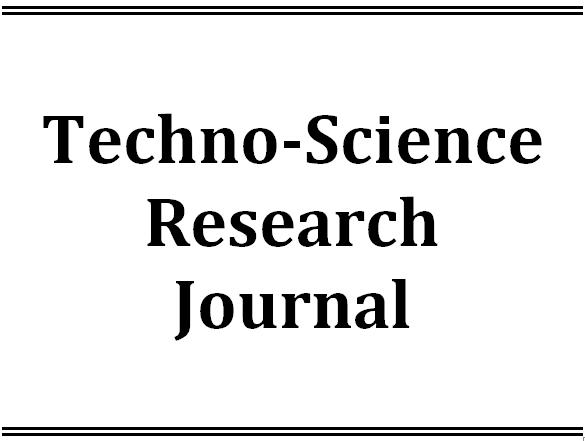Latest Issue
Empowering Education with Online Khmer Handwritten Text Recognition for Teaching and Learning Assistance
Published: August 30,2025Undergraduate Student Dropout Prediction with Class Balancing Techniques
Published: August 30,2025Status of Seawater Quality at Koh Rong Island, Sihanoukville, Cambodia
Published: August 30,2025Low-Complexity Detection of Primary Synchronization Signal for 5G New Radio Terrestrial Cellular System
Published: August 30,2025Word Spotting on Khmer Printed Documents
Published: August 30,2025Tuning Hyperparameters Learning Rate and Gamma in Gym Environment Inverted Pendulum
Published: August 30,2025Examining Passenger Loyalty in Phnom Penh Public Bus System: A Structural Equation Modelling Approach
Published: August 30,2025Prediction on Load model for future load profile of Electric Vehicle charging demand in Phnom Penh
Published: August 30,2025Economic Study on Integrating PV-DG with Grid-Tie: Case Study in Cambodia
Published: August 30,2025Optimization of the biodegradation of 17-α-ethynylestradiol (EE2) using response surface methodology
-
1. Department of Chemical Engineering and Food Technology, Institute of Technology of Cambodia, Russian Ferderation Blvd., P.O. Box 86, Phnom Penh, Cambodia.
Academic Editor:
Received: June 01,2014 / Revised: / Accepted: June 08,2014 / Available online: June 27,2014
17-α-ethynylestradiol (EE2) biodegradation was conducted using biofilm reactor in a medium containing both EE2 and glucose as organic carbon sources and in a medium without glucose and EE2 as the sole organic carbon source. The factors affecting the biodegradation are initial pH, initial EE2 concentration, initial nitrogen content, and biomass volume. Response surface methodology (RSM) and central composite design (CCD) were applied to determine the optimum operating conditions with the % degradation and the degradation efficiency as responses. The ANOVA revealed that EE2 concentration is the most significant factor that influences the % degradation and the biomass volume is the most significant factor that influences the degradation efficiency. Verification runs at optimum conditions showed that there were some peaks that appeared besides the peak of EE2 indicating that EE2 was biochemically transformed. The Monod kinetic and first order suit well for the EE2 biodegradation.

